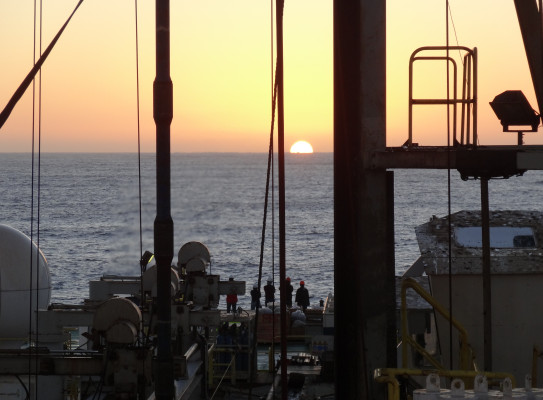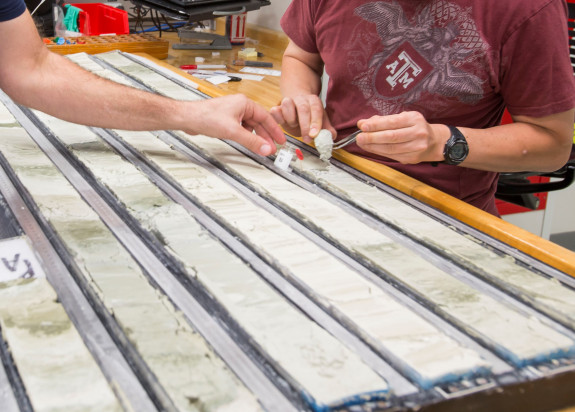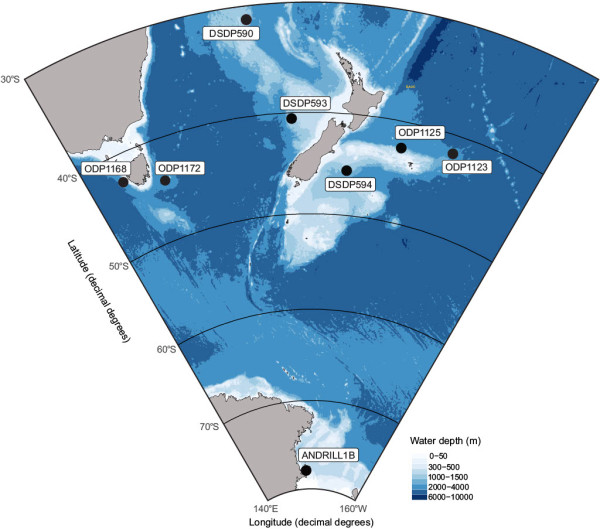3-million-year-old sediment records provide insights for future ocean warming

New research led by GNS Science and NIWA demonstrates the Southwest Pacific experienced ocean surface temperature anomalies nearly double the global average when carbon dioxide levels similar to today were sustained.
This has many parallels with current warming and strongly suggests that over the next few decades to centuries, the waters around New Zealand will again experience temperatures above the global average.
Researchers analysed geological records from the mid-Pliocene warm period (3 million years ago), which was the last time Earth experienced atmospheric levels of CO2 as high as those of today. With global average temperatures 2-3°C warmer than preindustrial, the mid-Pliocene is considered a valuable window into our near-future climate.
Marine sediment cores, drilled from seven sites, revealed that the ocean around New Zealand during the mid-Pliocene was on average 4.2°C warmer than pre-industrial temperatures, and near double the global average at that time. The findings are consistent with high-resolution computerised climate model projections that the oceans in our region will be 2-3°C warmer by the year 2100.

Credit: Tim Fulton, IODP JRSO
Georgia Grant, GNS Science climate scientist and lead author of the study, said, “These results are consistent with warming observed currently, expressed by the marine heatwaves recently experienced around New Zealand."
"It’s important for New Zealanders to be aware that with 2°C global warming we should expect higher ocean temperatures here."
"As an island nation, the ocean dictates much of our weather, and increasing ocean temperatures are one of the factors to why storms like Cyclone Gabrielle are expected to increase in severity under climate change.”


The latest report from the Intergovernmental Panel on Climate Change (IPCC) states that if we fail to achieve the Paris target and reduce emissions below 350 ppm, by the end of the century the Earth’s average temperature is very likely to be between 2.1-3.5°C warmer than preindustrial temperatures.
To be truly resilient we need to plan for greater than 2°C, accounting for ocean warming and tipping points that are not included in climate projections
Limitations of global climate models and opportunities from the Pliocene
Past climates like the Pliocene illustrate the long-term consequences of warming, as many processes take centuries to fully play out. By looking back in time researchers can better understand tipping points and long-term climate responses.
Ocean warming around New Zealand is often underestimated by computerised global climate models due to complex interactions between the ocean and atmosphere that are difficult to resolve on a global scale, and a lack of readily available observations.
“Regional climate predictions for the Southwest Pacific and Southern Ocean using computer models have consistently struggled to simulate climate change from instrumental observations and geological data compared to other parts of the world,” Grant said.
To address this NIWA developed a New Zealand Earth System (NZESM), which has enabled more detailed projections of heat transport and ocean current patterns in our region.
The results from the Pliocene geological records show agreement with the NZESM projections for future ocean temperatures in the Southwest Pacific providing further confidence in the projections and highlighting the potential of the mid-Pliocene as an appropriate analogue for future temperature change.
While research on past climates can provide valuable real-world insights on long-term processes that impact ocean warming, it represents the climate over thousands of years and cannot resolve the complexity of modern environment.
Used together the two independent lines of evidence provide a powerful tool for accessing both past and future climate change.
-
The Pliocene
Because the atmospheric levels of C02 during the Pliocene were as high as those of today (around 400 ppm), and global average temperatures in this period (2-3°C warmer than preindustrial ) were similar to current projections for 2100, this period of the geological past is considered an analogue for our near-future climate.
-
The New Zealand Earth System (NZESM)
The New Zealand Earth System was developed by NIWA in partnership with the UK Met Office, and has increased the resolution of simulations for the ocean around New Zealand by a factor of 5 compared to standard global climate models.
Photo Credit: Kristina Pascher & IODP